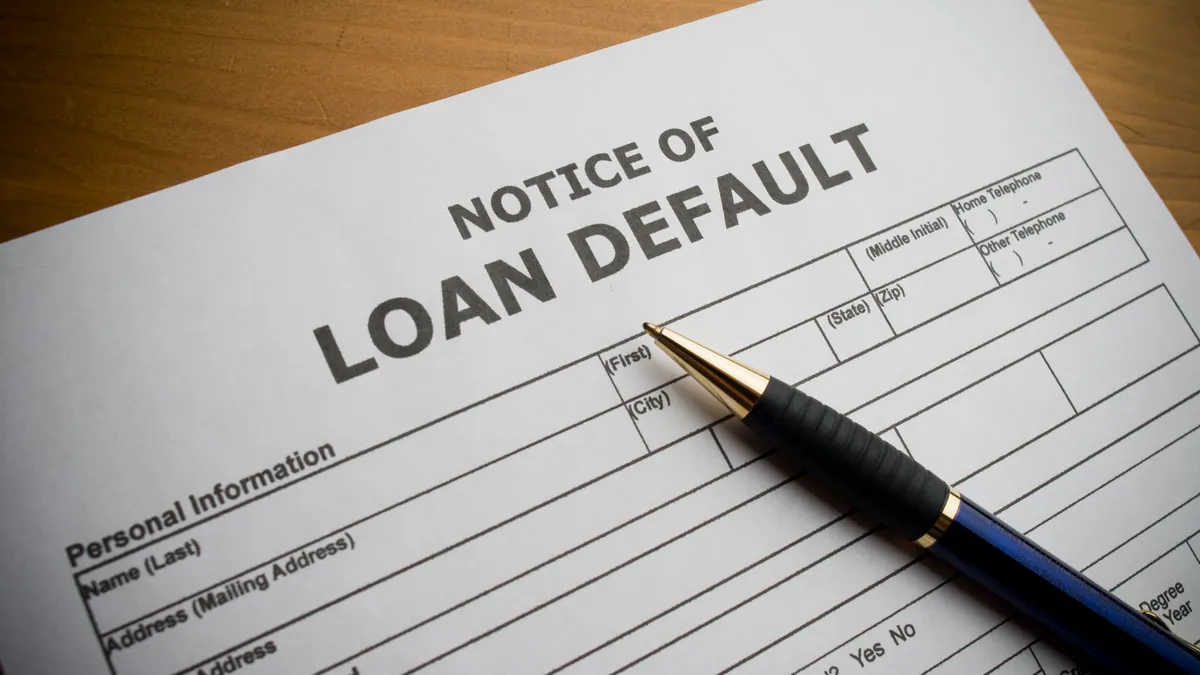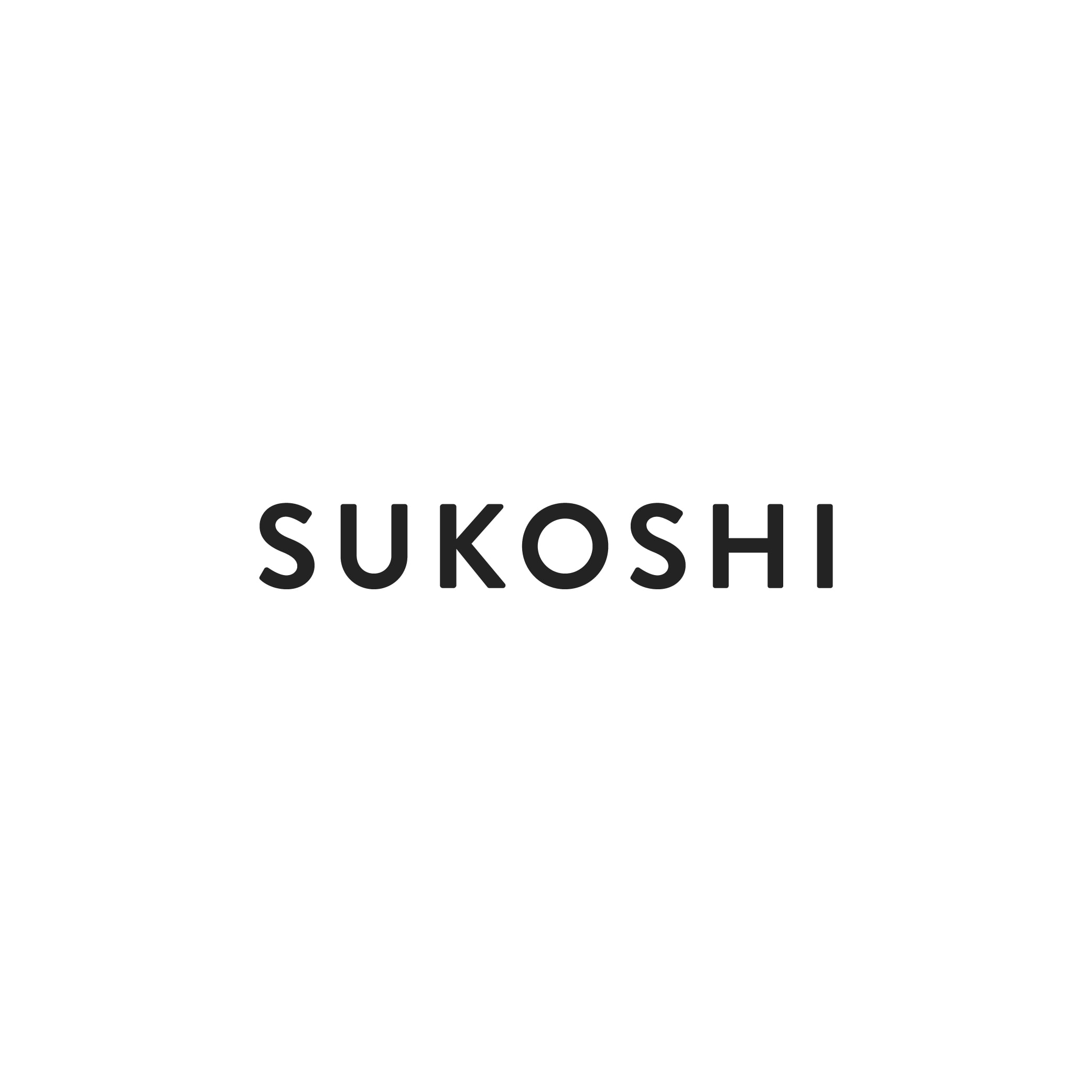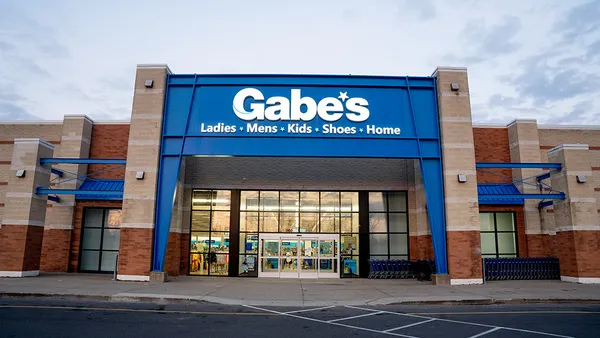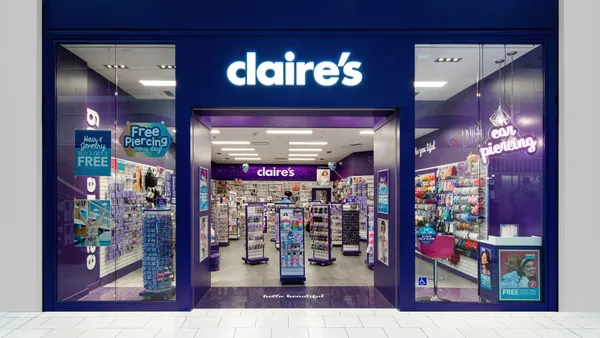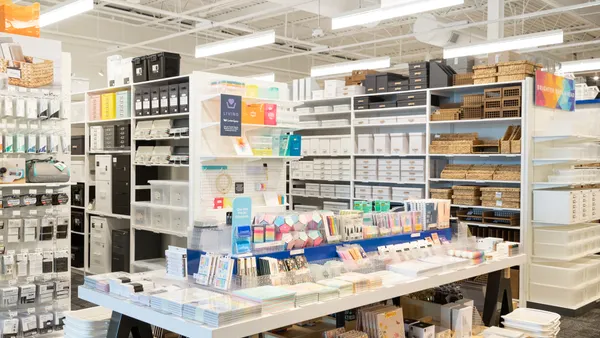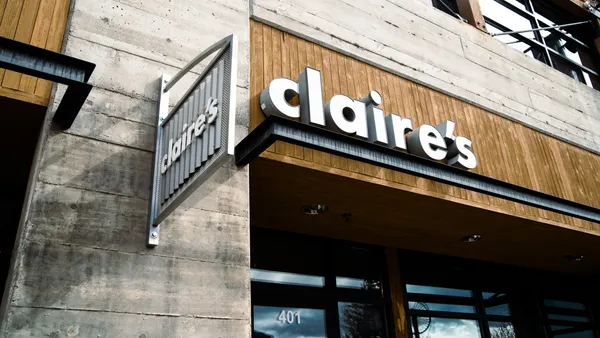Dive Brief:
- The tally of corporate defaults this year through Feb. 28 was at its highest since 2009. Retail led the way, with seven out of 23 defaults, or 30% of the global tally, through the end of February, S&P Global Ratings said in a report this month.
- Retail “continues to face challenges from logistics, labor, and supplier cost inflation, all squeezing margins for both retailers and their suppliers. Nearly half of retail issuers rated B- or lower have negative S&P outlooks or credit watch implications. As a result, “further downgrades as well as a potential increase in defaults” is possible, S&P said.
- Bankrupt companies are increasingly seeking reorganization over liquidation. According to a separate S&P report, 78.4% of corporate entities that filed for bankruptcy through February sought reorganization, the highest in at least 14 years.
Dive Insight:
Logistics, labor and supplier cost inflation continue to hurt the retail sector’s bottom line.
The report’s authors, led by Nicole Serino, said U.S. defaults were over 2.5 times higher than at this time last year — 16 at the time of the report’s publication versus six in 2022. “Given our expectation that economic conditions will continue to deteriorate through 2023, we expect the U.S. speculative-grade corporate default rate could reach 4% by December.”
Serino told Retail Dive that the consumer products and retail sectors “have a large number of weakest links — issuers rated 'B-' or lower with either a negative outlook or CreditWatch—which are 8x more likely to default than overall speculative-grade issuers.”
Non-traditional forms of defaults such as selective default, where a company is in default on certain types of financial obligations but not others, are trending upward. “From what we have found from other periods of economic stress, the percentage of selective defaults was pretty similar from previous years,” Serino said.
“[A]s consumers pull back on consumption as higher cost of living pressures cut into savings buffers, retail margins will be squeezed as their ability to pass through higher input costs to protect margins has diminished,” Serino said.
In a separate recent report, S&P also noted that companies are increasingly turning to the courts and to bankruptcy and reorganization. The report by Chris Hudgins of S&P noted that “companies from the consumer staples sector overwhelmingly favored reorganization over liquidation in 2022 and year-to-date 2023, with 85.7% of filings seeking reorganization.”
Through Feb. 28, S&P said 87 of the 111 bankruptcy filings it recorded were Chapter 11 filings.
S&P noted that companies in the consumer staples sector favored reorganization over liquidation in 2022 and year-to-date with nearly 86% of filings seeking reorganization. Party City, Serta Simmons, Bed Bath & Beyond and 99 Cents Only Stores are among the retailers that have either defaulted or filed bankruptcy so far this year.
Analysts with PwC had a similar take, saying the slowing economy may drive a rise in bankruptcies. Macroeconomic factors that emerged in 2022 shifted consumer behavior and created higher cost borrowing conditions.
At the same time, market liquidity has declined but operational challenges persist, which affects organic cash flow generation, PwC said, citing its analysis of Refinitive, LCD and FRED data. And as these circumstances likely continue “we can expect to see a sizable increase in restructuring activity as borrowers run out of levers to pull and lenders choose not to extend further accommodations,” PwC said.
Sarah Wyeth, retail and restaurants sector lead with S&P Global Ratings, told Retail Dive that loans increasingly have stiffer terms.
"When financial markets are volatile, lenders are less likely to offer amenable terms. Negotiations will be more difficult in today’s environment than they were in 2021," Wyeth said.



